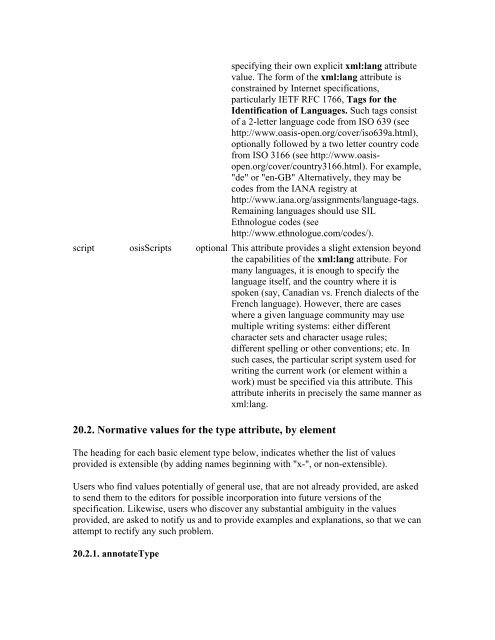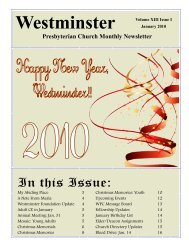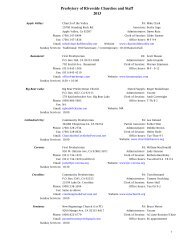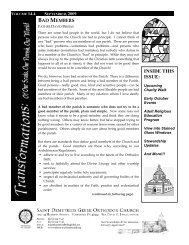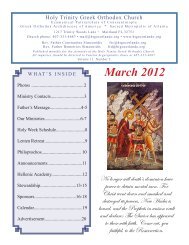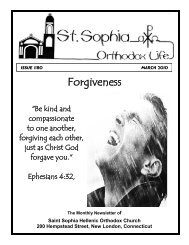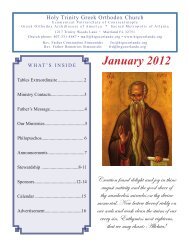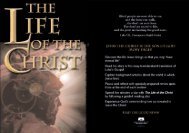OSIS? 2.0.1 User's Manual - Web services are running on AMBIB
OSIS? 2.0.1 User's Manual - Web services are running on AMBIB
OSIS? 2.0.1 User's Manual - Web services are running on AMBIB
Create successful ePaper yourself
Turn your PDF publications into a flip-book with our unique Google optimized e-Paper software.
script osisScripts<br />
specifying their own explicit xml:lang attribute<br />
value. The form of the xml:lang attribute is<br />
c<strong>on</strong>strained by Internet specificati<strong>on</strong>s,<br />
particularly IETF RFC 1766, Tags for the<br />
Identificati<strong>on</strong> of Languages. Such tags c<strong>on</strong>sist<br />
of a 2-letter language code from ISO 639 (see<br />
http://www.oasis-open.org/cover/iso639a.html),<br />
opti<strong>on</strong>ally followed by a two letter country code<br />
from ISO 3166 (see http://www.oasisopen.org/cover/country3166.html).<br />
For example,<br />
"de" or "en-GB" Alternatively, they may be<br />
codes from the IANA registry at<br />
http://www.iana.org/assignments/language-tags.<br />
Remaining languages should use SIL<br />
Ethnologue codes (see<br />
http://www.ethnologue.com/codes/).<br />
opti<strong>on</strong>al This attribute provides a slight extensi<strong>on</strong> bey<strong>on</strong>d<br />
the capabilities of the xml:lang attribute. For<br />
many languages, it is enough to specify the<br />
language itself, and the country where it is<br />
spoken (say, Canadian vs. French dialects of the<br />
French language). However, there <str<strong>on</strong>g>are</str<strong>on</strong>g> cases<br />
where a given language community may use<br />
multiple writing systems: either different<br />
character sets and character usage rules;<br />
different spelling or other c<strong>on</strong>venti<strong>on</strong>s; etc. In<br />
such cases, the particular script system used for<br />
writing the current work (or element within a<br />
work) must be specified via this attribute. This<br />
attribute inherits in precisely the same manner as<br />
xml:lang.<br />
20.2. Normative values for the type attribute, by element<br />
The heading for each basic element type below, indicates whether the list of values<br />
provided is extensible (by adding names beginning with "x-", or n<strong>on</strong>-extensible).<br />
Users who find values potentially of general use, that <str<strong>on</strong>g>are</str<strong>on</strong>g> not already provided, <str<strong>on</strong>g>are</str<strong>on</strong>g> asked<br />
to send them to the editors for possible incorporati<strong>on</strong> into future versi<strong>on</strong>s of the<br />
specificati<strong>on</strong>. Likewise, users who discover any substantial ambiguity in the values<br />
provided, <str<strong>on</strong>g>are</str<strong>on</strong>g> asked to notify us and to provide examples and explanati<strong>on</strong>s, so that we can<br />
attempt to rectify any such problem.<br />
20.2.1. annotateType


